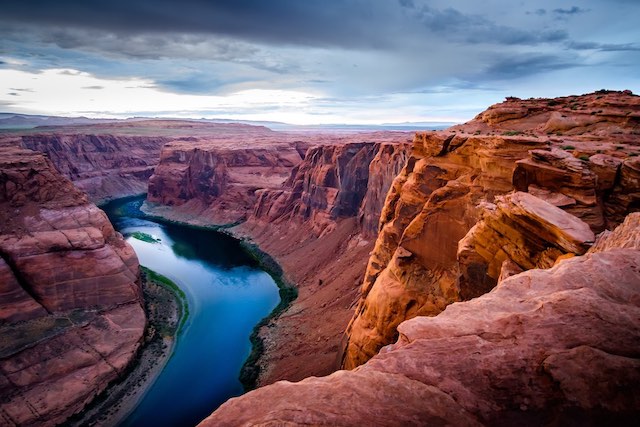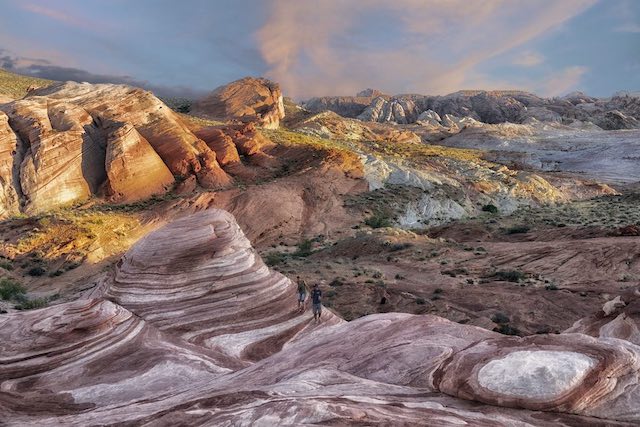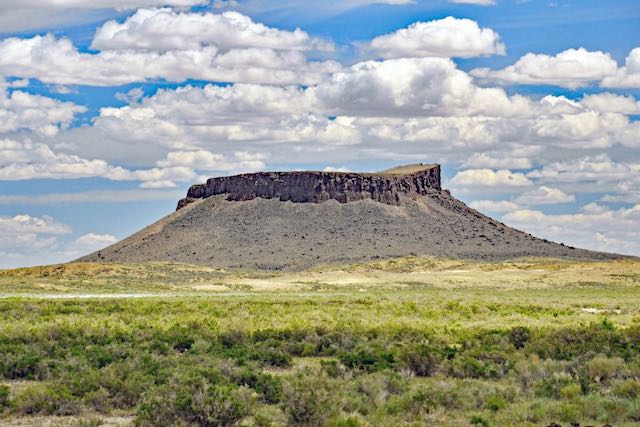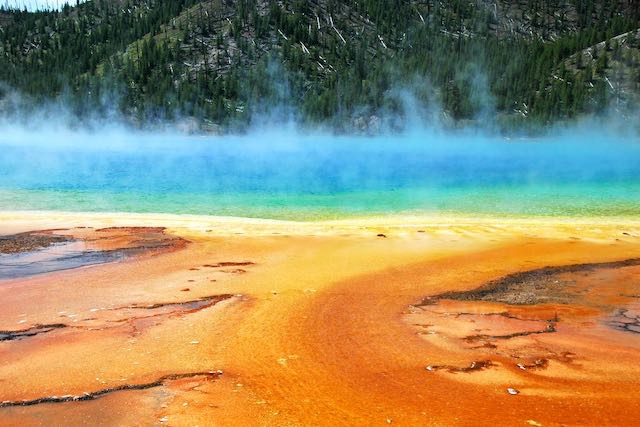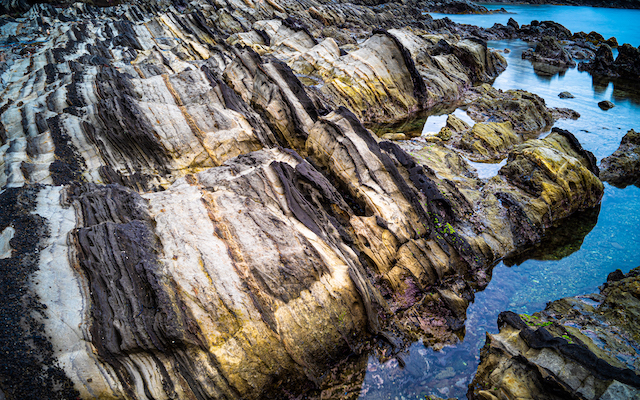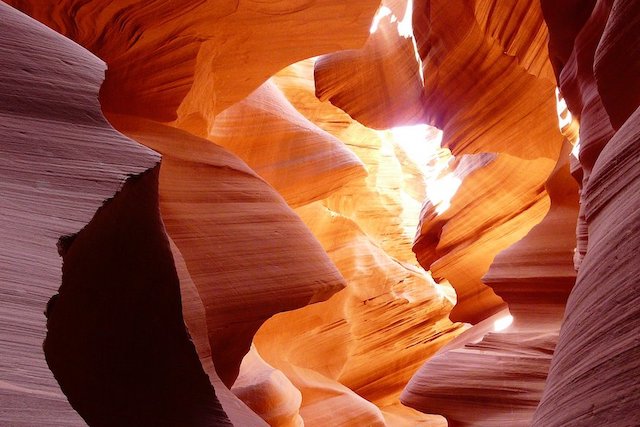
The most complete stack of geological formations on earth
Horizontal strata piled up endlessly on the cliffs of a deeply carved canyon. The Grand Canyon, which stretches across the northern part of the U.S. state of Arizona, is said to be “the most perfect place on earth where you can see the accumulation of strata”. From the approximately 2 billion year old strata exposed at the bottom of the canyon to the approximately 230 million year old strata at the top, you can see almost continuous layers of strata here.
The average thickness of the exposed strata is about 1,200 meters. The maximum thickness is 1,800 meters. You can feel the power of the strata from the photos.
Two billion years ago, there was only single-celled primitive life on Earth, and the oxygen concentration in the atmosphere was still low. Then, about 600 million years ago, oxygen levels began to approach modern levels, and around 540 million years ago, a wide variety of life, including vertebrates, began to appear.
Eventually, plants moved on to land, amphibians and reptiles appeared, and life on earth overflowed both on land and in the sea. Then, 250 million years ago, the largest mass extinction in history occurred.
In the strata of the Grand Canyon, this enormous flow of time, the history of the earth over 2 billion years, is almost completely recorded.
If you descend to the bottom of the valley, you will find a world of primitive life 2 billion years ago. If you climb up a cliff about 1,200 meters from the bottom, you will find yourself in a post-mass extinction world of 230 million years ago.
These thick striped cliffs are a place where you can experience a spectacular time travel through the history of the earth in one fell swoop.
The strata can be divided into two main blocks
The Grand Canyon has a continuous geological formation that spans about two billion years, but it can be divided into two major blocks.
Take a look at this picture.
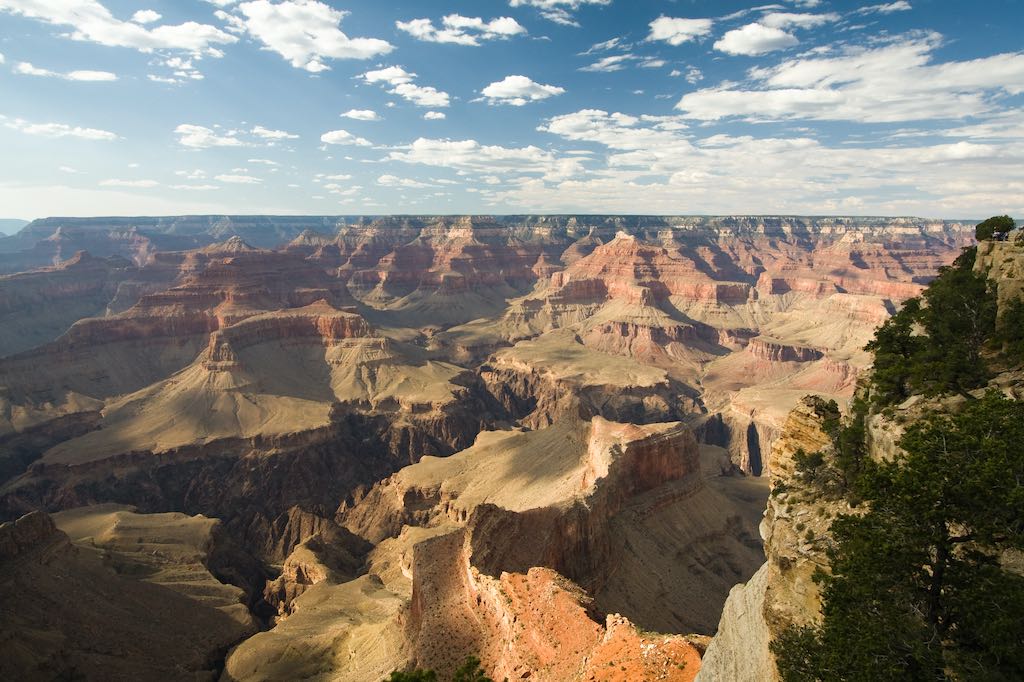
You can see a dark brown stratum without stripes underneath the red and beige stratum at the top. This is the part of the valley that has been carved deeper from the terrace-like midsection.
Dark brown strata without stripes are very old, mainly formed between 2 and 1.5 billion years ago. On the other hand, red and beige strata with horizontal stripes are relatively new strata, formed about 500 million years ago or later.
Between these two types of strata, there is a strata break called an “unconformity”, and the strata of the Grand Canyon can be roughly divided into two blocks after this point.
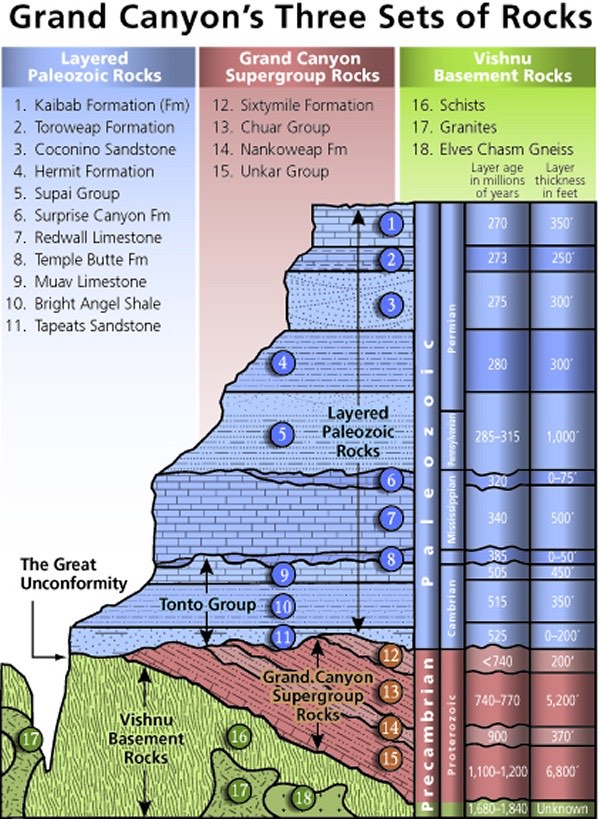
As for the older strata located on the lower side of the unconformity, we can see strata from 1.2 to 0.7 billion years old in some places. However, broadly speaking, there are only strata older than 1.5 billion years old. Since the strata located on the upper side of the unconformity are newer than about 500 million years ago, there is really a gap of a billion years between these two blocks.
Global glaciers have caused tremendous erosion
This unconformity, which divides the strata of the Grand Canyon into two, is still not clearly understood in terms of its formation process. Since about a billion years’ worth of strata are missing over a large area, it is certain that there was at least a large-scale erosion of the strata.
Moreover, it is not only the Grand Canyon that is missing strata from this era. Although varying in size, there is a clear gap (unconformity) between strata newer than 500 million years ago and older strata from earlier times in strata all over the world.
All over the world, erosion is occurring at the same time, and on a very large scale. What happened to the Earth during this time?
One of the most popular theories is that global glaciation caused the tremendous erosion. “Global glaciation”, as the term implies, means that the entire planet will be completely frozen. The land and oceans will be covered with ice all the way to the equator.
Such an event, called the “Snowball Earth,” is thought to have occurred three times in the 4.6 billion years of Earth’s history. The three times are roughly 2.2 billion years ago, 700 million years ago, and 600 million years ago.
Since severe erosion is occurring on the modern Antarctic continent, which is covered with thick glaciers, it is no surprise that severe erosion occurred worldwide during the global freeze. No, unless it is such a catastrophic event, there is no other possible reason for severe erosion to occur all over the world at the same time, removing up to one billion years of strata.
During the second and third global freezes, that is, 700 million and 600 million years ago, the strata of the entire world were reset by the deep cutting of earlier strata, and then the strata of about 500 million years ago were formed.
I have been talking about the distinct unconformity that divides the strata of the Grand Canyon into two blocks. The boundary, where about a billion years of strata are missing, is not a lost record of the past, but rather a record of tremendous erosion on a global scale. It may also be a record of the global freeze, a major event in the history of the Earth.
References
Katsuaki Watanabe (2020) Utsukushisugiru chigaku Jiten (Handbook of the Most Beautiful Geological Wonders), Tokyo: Shuwa System [published in Japanese].
Location
Translated with www.DeepL.com/Translator (free version)

